There are many ways to get around Detroit, and surprisingly, mobility in Motown works pretty well without a car. You can explore the city on foot, take part in guided tours of downtown Detroit, go on a bike tour along the wide streets and through historic neighborhoods, use the People Mover for an initial orientation or take the only free streetcar.
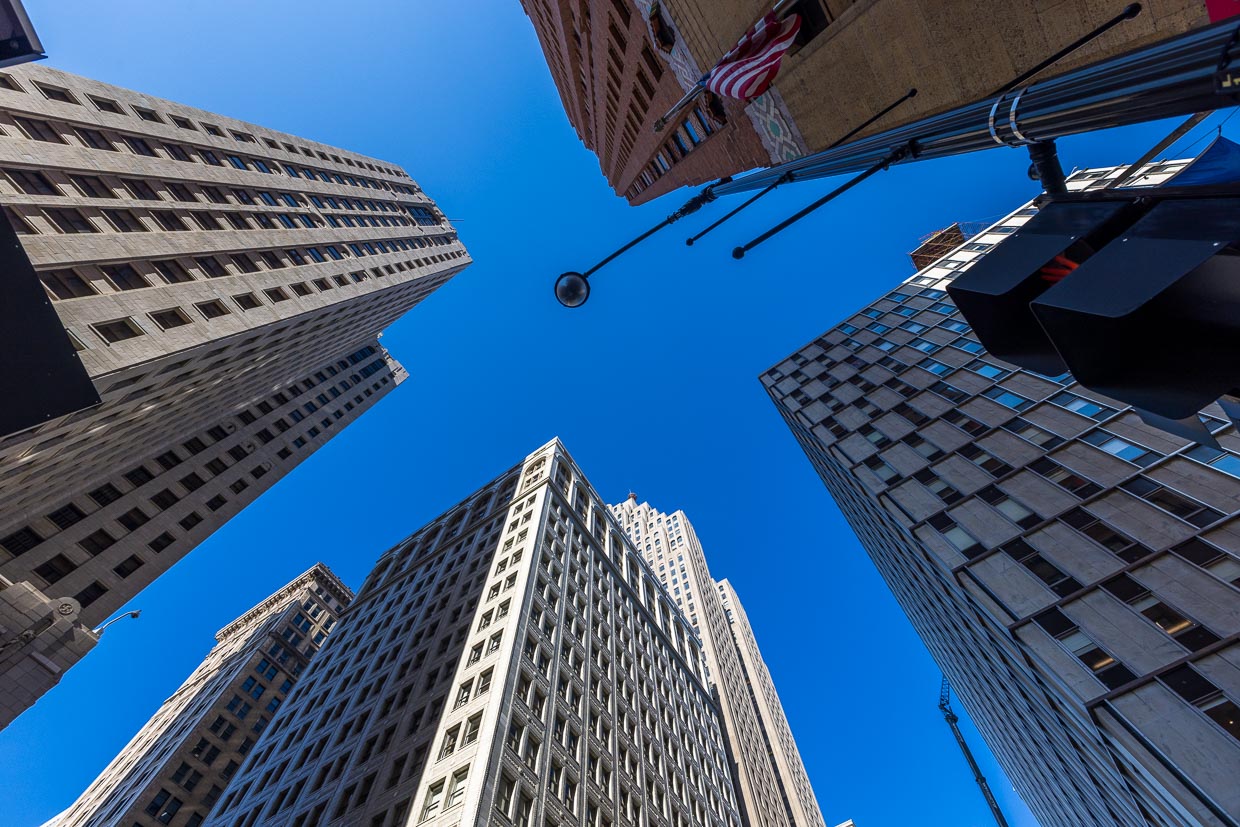
On foot through downtown Detroit
Downtown Detroit is perfect for walking. More and more high-rise buildings from Detroit’s heyday between 1910 and 1930 have been restored and can be admired from the outside as well as the inside. The Guardian Buidling on Griswold Street is a colorful Art Deco icon with an impressive banking hall. Guided tours with City Tour Detroit start from here. Many of the historic buildings are now hotels or restaurants and are therefore freely accessible. The Element Building on St. John’s Street is one of these buildings that have been resurrected from the ruins. It was built in 1925 as an office building and stood empty from 1978. Today, the Element Detroit at the Metropolitan is a hotel and restaurant with a rooftop bar on the 11th floor. There is also an interesting photo exhibition on the second floor documenting the reconstruction. Hart Plaza and the promenade along the Detroit River, where the Renaissance Center, the tallest building in the city, is located, are just a short walk away. The RenCen also has an eventful history and the high bar on the 72nd floor offers a great view.
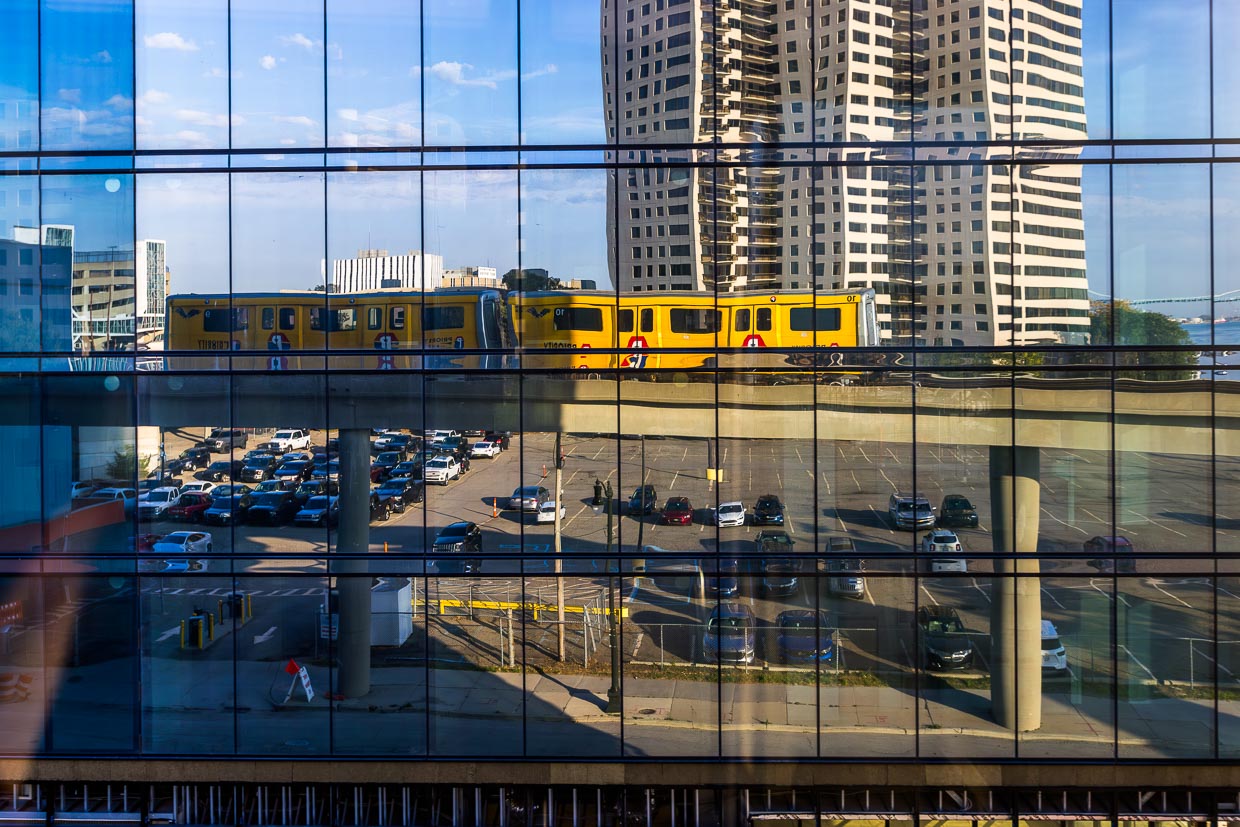
Free ride with the Detroit People Mover
Locals may smile a little at the Detroit People Mover, or DPM for short. The elevated train system, which has been circulating through downtown Detroit since 1987, was intended to move people, but never became a means of mass transportation. For tourists, however, the People Mover is a great thing. With 13 stations serving the most important places in the city center, the elevated train is perfect for an initial orientation tour. The trains run at short intervals and if you haven’t seen everything on the first round, which takes around 20 minutes, you can simply stay seated. The light rail on stilts is getting on in years and is always running at a loss. Some are calling for it to be demolished or converted into a highline park like the one in New York. At 75 cents, the DPM has always been a cheap way for tourists to visit the city. In 2024, the People Mover can be used free of charge all year round for the first time. If this measure doesn’t help to finally live up to its name, the People Mover will probably soon be history.
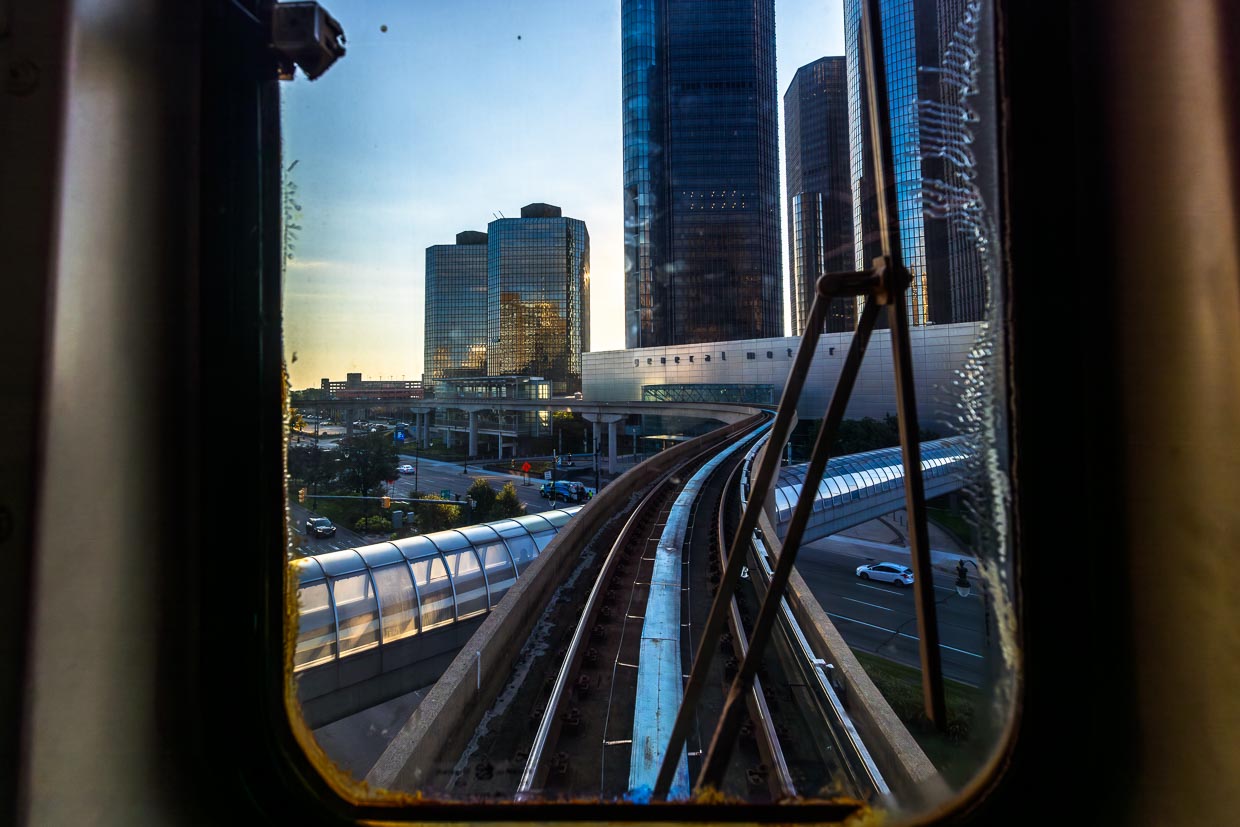
Cycling through Detroit
The first roads in Detroit were not paved for cars, but for bicycles. Henry Ford put his first car on four bicycle tires and used a bicycle chain for propulsion. Detroit has a long cycling tradition and the city’s new upswing is accompanied by a cycling boom. Slow Roll, a civic movement in the truest sense of the word, has been around since 2010. Two friends arranged to meet every Monday for a bike ride through the city. More and more people joined them. Slow Roll sparked a new sense of community. Thousands of people cycle through Detroit together and take a positive view of their city.
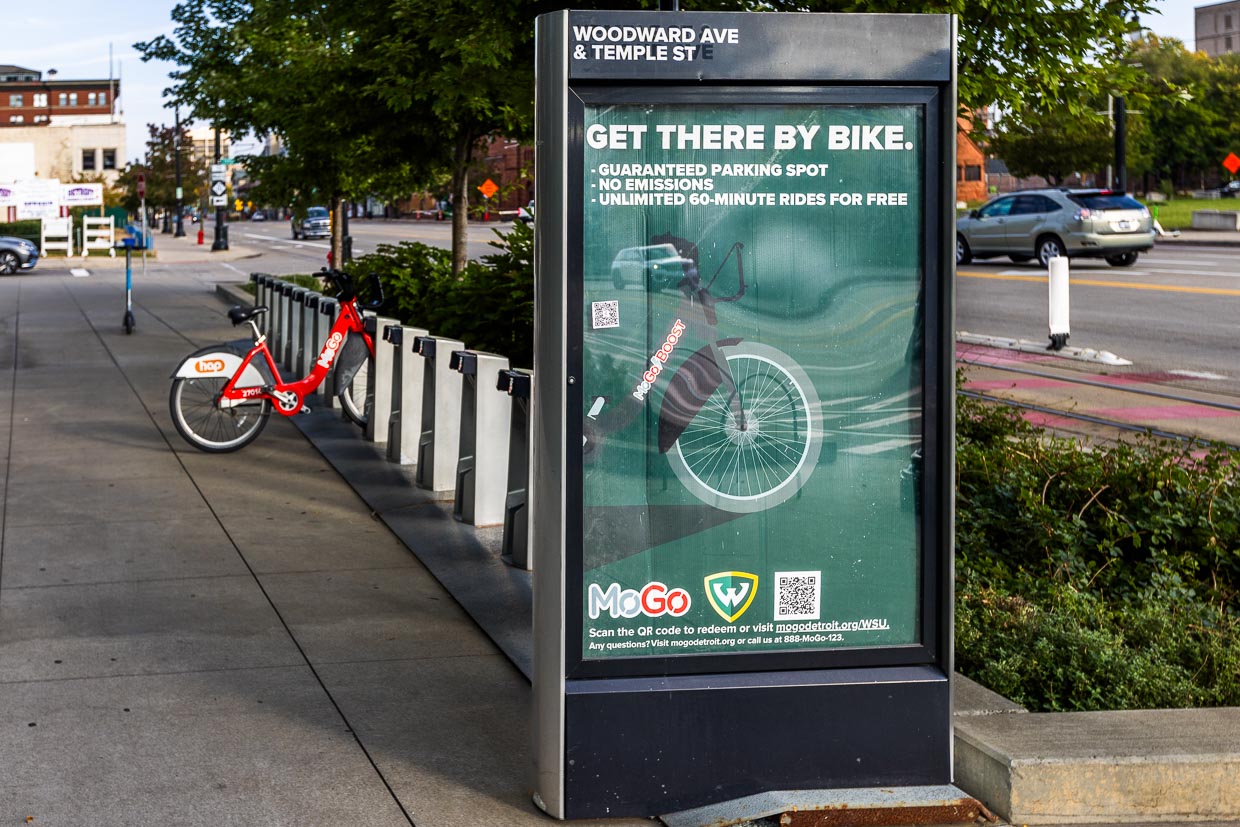
Today there are bicycle factories, green bike lanes, marked bike paths on the wide avenues and MoGo, a bike rental system. Wheelhouse Detroit, a bike rental shop on the riverfront, offers guided themed tours. The bicycle is definitely a good means of transportation in the car city of Detroit. Transportation Senator Horatio Earle would certainly be pleased about the renewed bike boom in his city. In 1909, bicycle enthusiast Horatio Earle battled Michigan’s muddy pothole-ridden roads. He is often referred to as the Father of Good Roads and is reported to have said:“I often hear now-a-days, the automobile instigated good roads; that the automobile is the parent of good roads. Well, the truth is, the bicycle is the father of the good roads movement in this country.“
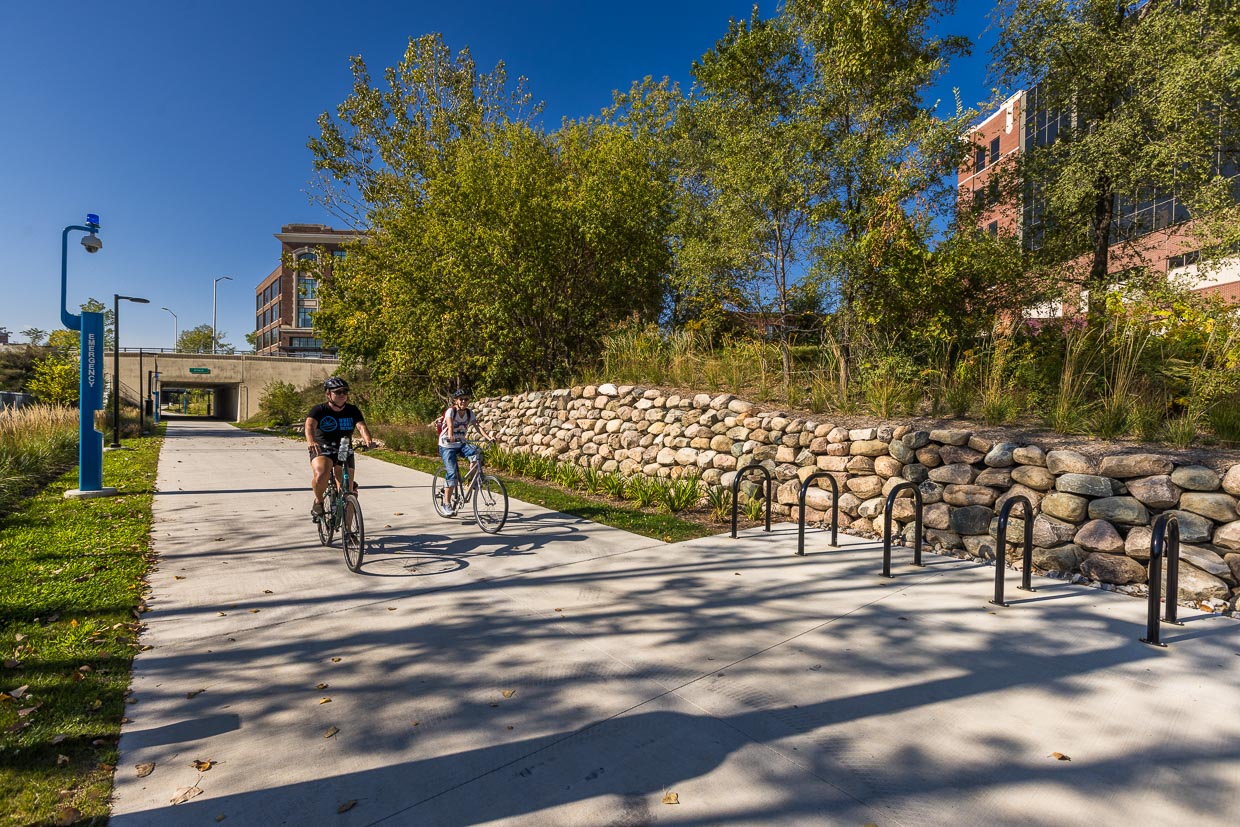
A streetcar for everyone
The red streetcar on Woodward Avenue in Detroit is called QLine. The construction of the line was initiated by car dealership king and racing team owner Roger Penske. QLine is the name sponsorship of the investment company Quicken Loans. The line runs to the company’s headquarters in downtown Detroit and is used by many employees. The streetcar is a good way to get from downtown to midtown Detroit along the long Woodward Avenue. The Detroit Institute of Arts in Midtown also has a stop. The streetcar can be used free of charge, but is often blocked by parked cars.
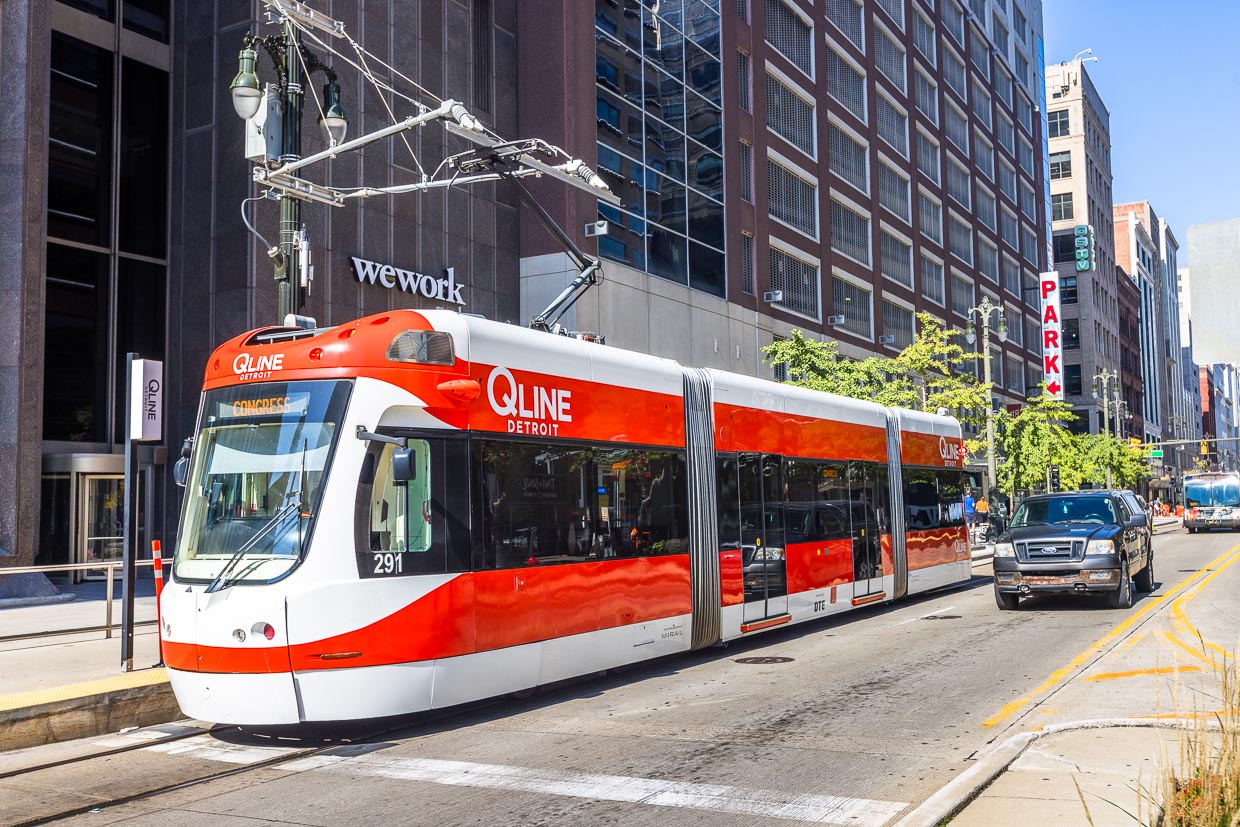
Parking garages in abundance
Despite all these alternatives to the car, the latter is by no means neglected in Detroit. There are many parking garages in the city center and many open spaces created by the demolition of dilapidated buildings now serve as parking lots. Today, Detroit’s streets seem oversized. After rapid population growth between 1910 and 1930, when the population reached one million, it peaked in 1950 with almost two million inhabitants. After that, the decline began in every respect. The city was characterized by racial unrest, unemployment, crime and urban exodus of the white population to the suburbs. Today, around 600,000 people live in Detroit, and there is plenty of space for bicycles and pedestrians on the wide streets in downtown. Incidentally, crime in downtown Detroit has been falling for years. Places that were still among the most dangerous places in the USA in 2015 are now safe again. You can see children playing in newly created green spaces and people relaxing in cafés.
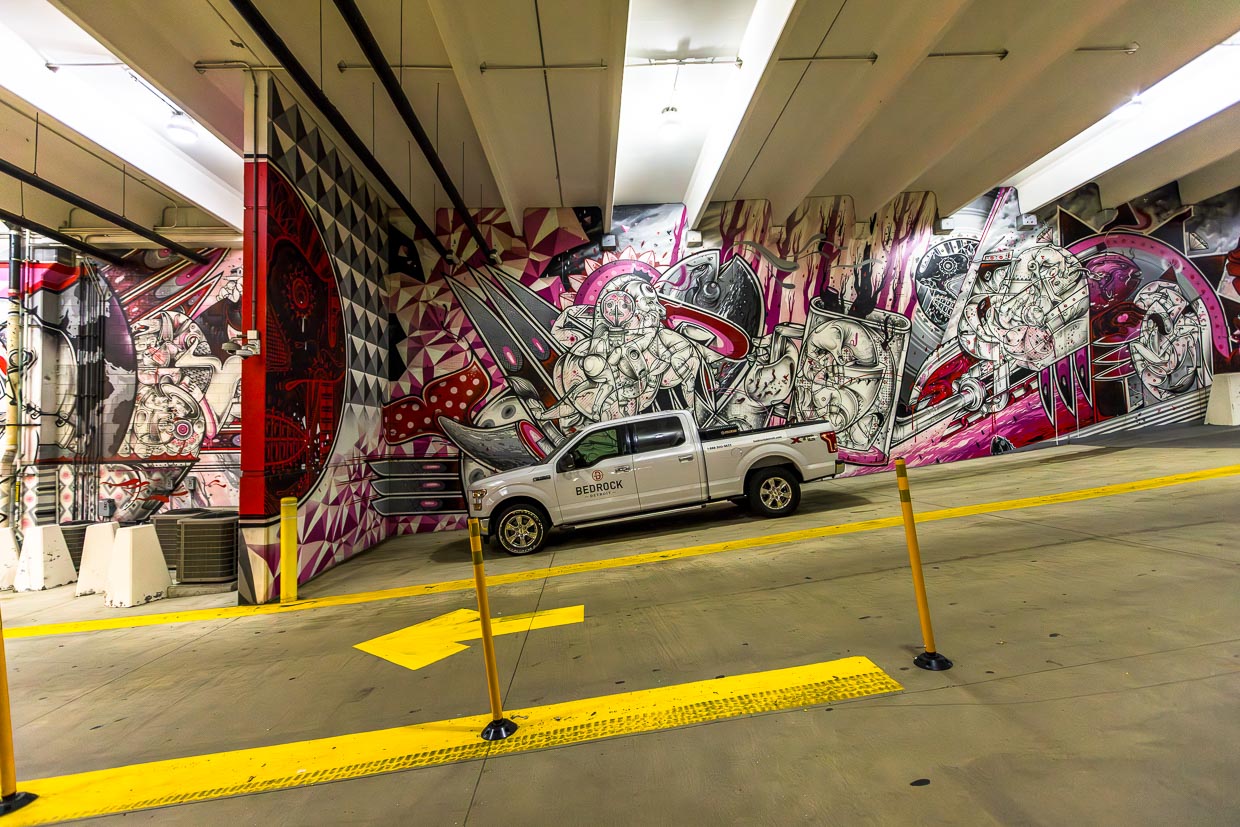
Detroit is well on its way to becoming one of the top travel destinations in the USA.
Our journey through Michigan starts in the capital Detroit with classics and new attractions of a city in transition. The huge Michigan Central station, once a ruined line, celebrated its comeback as a research location for mobility in 2023. However, the options for getting around Detroit have long been extremely diverse, as mobility in Motown works pretty well even without a car. The journey continues to Traverse City on Lake Michigan with the Sleeping Bear Dunes National Park. Mission Point Lighthouse is one of these lighthouses with a history. Why the lighthouse in Grand Traverse County is particularly popular with women is explained in the story about Sarah Lane and the keeper program. We continue on to Charlevoix. The town has a maritime flair and lots of stones. There are Petoskey stones on the beach and Earl Young’s famous stone houses in the town. USA without cars? A fact on Mackinac Island. The success story of Michigan’s heavy industry began with a defeat.
The research was supported by Visit Detroit

